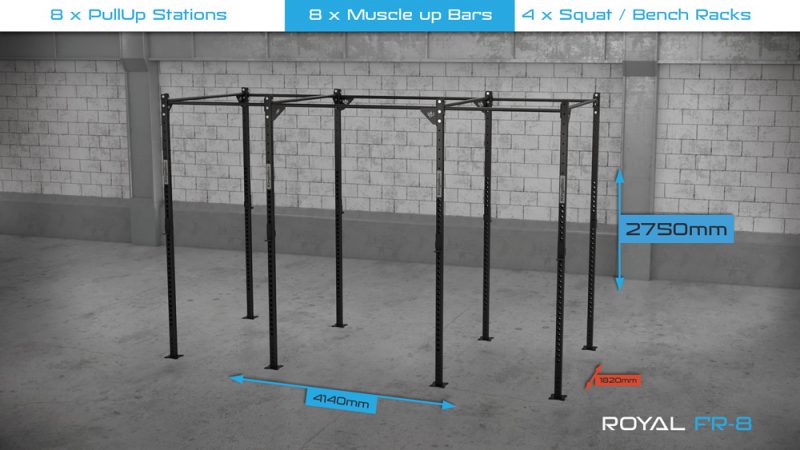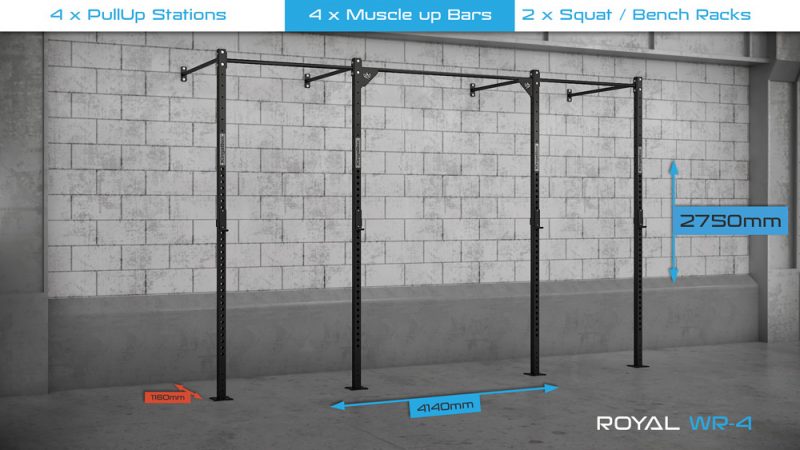Opening a gym, a Cross Training box or even a Functional Fitness box may seem easy in theory, but after many years spent building some of the most beautiful gyms in Europe we can safely say that that is not the case.
Often- too often- opening a box has people facing unpleasant surprises such as:
- Buying the wrong materials
- Miscalculating the training spaces
- Buying too much equipment
These and many more are the mistakes that can lead to a bad start to your journey as an owner.
Indice dei contenuti
Why do these mistakes happen
Very often due to lack of experience you rely on the wrong people or try doing things yourself. This way, you can end up having to deal with your own mistakes, which sometimes can cost up to several thousand euros, weighing heavily on the health of your start up.
How to avoid these mistakes
It’s simple: always rely on competent and serious professionals who can help you design from scratch the training space for your new business. People who not only think about selling you as much equipment as possible, but who help you in the development of your business project, starting from the choice of the venue.
We know that finding people like this is very difficult. This doesn’t mean they don’t exist, there are simply very few. They are always very busy and sometimes it is difficult to get in touch with them.
What is the alternative solution

Many would answer: there’s none. We at Kingsbox however have always prioritized the satisfaction of our customers. With time they have become real friends and members of the Royal Family. Because of this we decided to put together the first ever professional guide designed to help you build from the ground up your box, just like real professionals.
Are you ready to become an expert in cross training equipment? Okay, let’s embark on this trip together.
Choosing the right venue
It all starts from the choice of the commercial venue in which you decide to build your gym. First of all, you need to assess what will be taught in the gym. Why is this important? Because based on what we wish to teach, the characteristics of the establishment that we need will change. For example:
Open a Cross Training Box
A Cross Training box has very special features you should be mindful of, such as:
Choosing the location
If you do Cross Training or have seen it being practiced you know that it is very noisy. Not so much for the screaming athletes, happy they got to finish the WOD in time :), but rather the noises of barbells loaded with many 20kg bumpers dropped on the floor at the end of a training. It’s the vibrations produced by the continuous dropping of all this weight, day after day, lesson after lesson.
We assure you that we have had dozens of customers who have had problems with their neighbors, just because they had not considered this scenario and ended up having to deal with serious problems.
So our advice is to single out a commercial venue, possibly located on the ground floor, far away from homes and businesses that could bring issues. The smartest option is to identify -if possible- an easily accessible industrial zone to surround the venue by businesses that have no qualms with noise.
The advantages of this choice: lowest rental cost, lack of neighborhood problems as result of the noise produced by the equipment.
Assessing the necessary space
The Ceiling
The ceiling of a Cross Training box must measure at least 4 meters from the ground. The size of a rig with rings and climbing starts at 3.60m, plus at least 40 cm of living space to accommodate the air conditioning system.
Size per user
To calculate the vital space per user there is a very easy equation. Each user needs at least 9 m2, adding to that the storage space for the equipment (i.e. rowers, assault bikes, bumpers, kettlebells, plyobox, barbells) and the rigs (sizes vary based on the configuration that we will choose later).
Remember that the 9 m2 refer simply to the space to perform the movements, so calculating the necessary space will be very simple through the MVS formula (Minimum Vital Space) :
U x N = Pure meters needed
(U) corresponds to the user x 9m2 multiplied by (N) the number of users per class that we aim to host during our classes.
Cross Training boxes, unlike the classic gyms with isotonic machines, have to allow a minimum living space per user because of the different WODs. They can, e.g. include the use of barbells that measure 220cm, adding to that the allowance of 40cm on each side to avoid collisions.
Surface area for the equipment
The rig
The rig is one of the fundamental pieces of equipment for a Cross Training box. Its position can either be central, lateral (self-supporting) or put up against the wall thanks to special supports.
Your choice of the position will have to take into account the size of the rig itsself. Take for example a box that has decided to accommodate 16 people per class.
How large should a rig be to comfortably host 16 users? A rig for 16 users must have a minimum of 8 pull-up bars, so that users can alternate during the WOD.
Rig Free Stand (self-supporting)
As you can see from the picture below this rig has 8 pull bars, also called Pullup Stations. In this case, 16 people could train for each workout, alternating according to the type of training required.

A rig like this is 4140 mm width by 2750mm hight, plus one meter on each side.
Leaning rig (wall mounted)

As you can see from this picture this is rig is placed on the wall and has 4 Pullup Station. To comfortably train 16 users you will need 2 of these rigs. The advantage of a wall rig is that it can be placed on virtually any wall of your box and makes its modularity its strength. As a matter of fact, you can add all the modules you need to reach the required size.
In our case, 4 more Pullup Stations can be added next to it or in a mirroring position on the other wall of the gym.
Overall dimensions: 4140 mm width by 2750mm height, plus an allowance of one meter on each side.
Storage space
So far we have seen how to calculate the minimum living space and the bulk of the rig. Now we have to evaluate the perimeter space necessary to store all the accessory equipment.
A cross training box essentials needs this type of equipment :
Box equipment of Cross Training
- Rig
- Ghd
- Barbells
- Bumpers
- Kettlebbells
- Med Ball
- Plyo Box
- Rower
- Assault Bike
- Air Runner
- Bike Erg
- Sky Erg
Obviously this type of equipment must be in reach within the training perimeter, placed on the sides of the rigs. Around the training perimeter we need to add a one meter passage, so we can safely calculate 2 linear meters that skirt the entire perimeter.
Toilets, showers and reception
In calculating the required yardage it is always good to add the space necessary for the technical rooms and of course :
- Men’s locker room
- Women’s changing room
- Toilets
- Showers
- Reception
- Technical rooms
The minimum size of each changing room for gyms with a capacity of up to 10 people is 1.6 m2 per person, with a minimum of 6.4 m2. The changing rooms are equipped with a toilet with no less than of one w.c., a sink and two shower stalls for every twenty-four users.
Be careful because the legislation about it is very strict, we advise you to take a look at Article 7 published in the Gazzetta Ufficiale at this address.
Conclusion PART 1
This is only the first part of our great journey towards the design and building of your perfect CrossTraining box. Don’t miss out on the second part where we’ll talk about which equipment to buy and how to choose it based on the number of users in your gym, so as to avoid unnecessary waste of resources.






